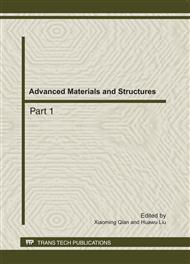p.3
p.12
p.18
p.23
p.28
p.32
p.36
p.40
Mechanism of Silicon/Carbon Reaction for β-SiC Bonded SiC Materials
Abstract:
Based on industrial silicon and carbon black as starting materials,β-SiC bonded SiC materials were prepared. The microstructure of such material and the silicon/carbon reaction were analyzed and investigated by XRD, SEM and other tools. The results indicate that the synthesis of β-SiC at 1400°C can be achieved through gas-phase mass transfer, liquid dissolution as well as in-situ reaction. While gas-phase mass transfer is the dominant reaction during the sintering of the material, in which β-SiC exists mainly as nanowhisker. The formation of β-SiC nanowires is believed to be the mechanism of reaction sintering.
Info:
Periodical:
Pages:
12-17
Citation:
Online since:
September 2011
Authors:
Keywords:
Price:
Сopyright:
© 2011 Trans Tech Publications Ltd. All Rights Reserved
Share:
Citation:


